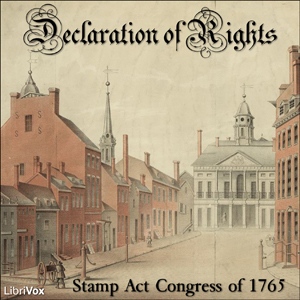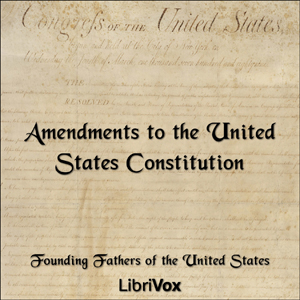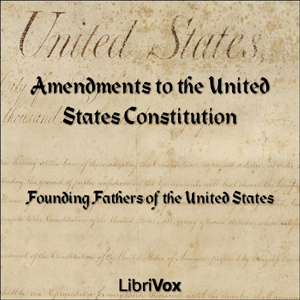- An August morning with Farragut, by W. H. Overend, American painter, painting, frontispiece
- The United States, Volume II: Part I: The colonies win their freedom: Historical note
- Congress and Valley Forge (1777-1778), by John Fiske
- Baron Steuben drilling the colonial troops at Valley Forge, by Edwin A. Abbey, American artist, 1852, painting p. 4
- The message of Lydia Darrah (1777), by Elizabeth F. Ellet
- Mollie Pitcher (1787), by Kate Brownlee Sherwood
- The capture of Major André (1780), by Jared Sparks
- A visit to General Marion (1781), by Charles Carleton Coffin
- When Cornwallis surrendered (1781), By Burton Egbert Stevenson
- George III acknowledges the independence of the colonies (1782), by Elkanah Watson
- When Washington resigned his commission (1783), by R. M. Devens
- The United States, Volume II: Part II: Life in revolutionary days: Historical note
- The Meschianza at Philadelphia (1778), by John F. Watson
- A New England Thanksgiving dinner in 1779, by Juliana Smith
- A call on Lady Washington in 1780, by Charles D. Platt
- How people traveled in revolutionary times (1775-1781), by John Bach McMaster
- Abraham Davenport (1780), by John G. Whittier
- The United States, Volume II: Part III: The first years of the nation: Historical note
- America, by Samuel Francis Smith
- How Philadelphia celebrated the ratification of the Constitution (1788), by John Bach McMaster
- The first Inauguration Day (1789), by John Bach McMaster
- The death of Washington (1799)
- Red Jacket and the missionary (end of the eighteenth century), by Charles H. L. Johnston
- The burning of the Philadelphia (1804), by Cyrus Townssend Brady
- The trials of the British Minister in Jefferson's administration (1803-1809), by James Parton
- The Clermont's first advertisement
- The United States, Volume II: Part IV: The Louisiana Territory: Historical note
- Napoleon plans to sell Louisiana (1803), by A. E. Winship and Robert W. Wallace
- The ''bargain'' purchase of the Louisiana Territory (1803), by James Parton
- Taking possession of Louisiana Territory, by Thure de Thulstrupp, painting p. 114
- Exploring the Louisiana Territory, by James Parton
- Lewis and Clarke at the source of the Missouri, from their journal
- Sa-Cá-Ga-We-A (1804), by Edna Dean Proctor
- The United States, Volume II: Part V: The war of 1812: Historical note
- What caused the second war with England (1812), by Agnes C. Laut
- How Winfield Scott rescued the Irishmen, by James Barnes
- On the capture of the Guerrière, by Philip Freneau
- The Shannon and the Chesapeake (1813), by Thomas Tracy Bouvé
- How Perry saved the Northwest (1813), by Charles Morris
- The battle of Lake Erie, from an engraving, painting p. 148
- The Star-Spangled Banner (1814), by Francis Scott Key
- Tecumseh, the Indian Brigadier-General (1813), by Charles H. L. Johnston
- The Privateers of 1812, by Willis J. Abbot
- The ''Horse-Marines'' of 1814, by John Bach McMaster
- The United States, Volume II: Part VI: A period of growth and expansion: Historical note
- The opening of the Erie Canal, by John Bach McMaster
- The guest of the Nation, by Daniel Webster
- The highest peak of the Rocky Mountains, by John Charles Frémont
- The first telegram, by R. M. Devens
- A little Scotch pioneer in Wisconsin (the first half of the nineteenth century), by John Muir
- The United States, Volume II: Part VII: The Mexican War: Historical note
- ''Remember the Alamo !'', by Cyrus Townsend Brady
- The importance of one vote, by W. H. Vail
- The storming of Chapultepec (1847), by James Barnes
- The United States, Volume II: Part VIII: California: Historical note
- When the English discovered California (1577-1579), by Edward Everett Hale
- On the California Coast in the Thirties, by Richard Henry Dana, Jr.
- How the ''Forty-Niners'' reached California, by Henry Childs Merwin
- Early business days in San Francisco (1849-1853), by Henry Childs Merwin
- The United States, Volume II: Part IX: The shadow of Civil War: Historical note
- The ''Broadcloth Mob'' of Boston (1835), by Harriet Martineau
- On the underground railway (about 1858), by Francis Grierson
- The great Lincoln-Douglas debate (1858), by Francis Grierson
- Just before the war (1858), by Morris Schaff
- The last moment of John Brown, by Thomas Hovenden, born in Ireland, 1810, died in America in 1895, painting p. 290
- The United States, Volume II: Part X: From Fort Sumter to Chancellorsville: Historical note
- The bombardment of Fort Sumter (1861), by Orville J. Victor
- Battle-Hymn of the Republic (1861), by Julia Ward Howe
- The gathering of the Great Army (1861), by Charles Carleton Coffin
- Jonathan to John, by James Russell Lowell
- The Merrimac and the monitor (1862), by John S. Wise
- Taken prisoner at Shiloh (1862), by Henry M. Stanley
- The first reading of the Emancipation Proclamation, by Francis Bicknell Carpenter (United States, 1830-1900), painting p. 346
- Boston Hymn, by Ralph Waldo Emerson
- The United States, Volume II: Part XI: The turning-point: Historical note
- ''Stonewall'' Jackson by the river (1863), by Mary Johnston
- A three-hour truce at Vicksburg (1863), by W. H. Tunnard, of the Confederate Army
- Union gunboats on the Mississippi, from an engraving, painting p. 366
- A drummer-boy at Gettysburg (1863), by Harry M. Kieffer
- John Burns of Gettysburg (1863), by Bret Harte
- The Gettysburg Address, by Abraham Lincoln
- Alabama dressmaking in the days of the Blockade (1861-1865), by Parthenia Antoinette Hague
- General order number 11, by G. C. Brigham, painting p. 390
- The United States, Volume II: Part XII: The end of the struggle: Historical note
- The Battle of the Crater, Petersburg, by J. D. Woodward, painting p. 406
- The day of the evacuation of Richmond (1865), by Morris Schaff
- Carrying a message to General Lee, by John S. Wise
- Lee's surrender (1865), by Morris Schaff
- America after the Civil War, by William Ewart Gladstone
- The United States, Volume II: Part XIII: Stories of the Western Indians: Historical note
- A Choctaw holiday (about 1850), by George Catlin
- What the Indians thought of the White Men, by George Bird Grinnell
- The Indian story of the Custer tragedy (1877), by James McLaughlin
- The Temecula Valley, and American Grand Pré (1869), by Helen Hunt Jackson
- The United States, Volume II: Part XIV: The Spanish War: Historical note
- Cuba to Columbia, by Will Carleton (April, 1896)
- The sinking of the Maine (1898), by Willis J. Abbot
- The battle of Santiago (1898), from the account of a newspaper correspondent
- The charge at El Caney, by Frank T. Merrill, painting p. 488
- The flag goes by, by Henry Holcomb Bennett
- The United States, Volume II: Part XV: The twentieth century: Historical note
- The romance of the reindeer (1905), by Mary Gay Humphreys
- Totem poles, Alaska, photograph p. 504
- Learning coal-mining, by Joseph Husband
- The social value of the telephone in the United States, by Herbert N. Casson
- How the Panama railroad was built (1849-1855), by Hugh C. Weir
- The steam shovel at Panama, by Hugh C. Weir
- The triumph of the wireless (1909), by Captain J. B. Ranson, R.N.R.
- The National Red Cross at work, by Constance D. Leupp
- Gettysburg fifty years after, photograph p. 558
- ''America for me'', by Henry van Dyke
This is the thirteenth volume of the 15-volume series of The World’s Story: a history of the World in story, song and art, edited by Eva March Tappan. Each book is a compilation of selections from prose literature, poetry and pictures and offers a comprehensive presentation of the world's history, art and culture, from the early times till the beginning of the 20th century. Part XIII is the second volume of the history of the United States, exploring topics from the Civil War, the settlement on the West Coast, and new scientific discoveries from the 19th and early 20th centuries. - Summary by Sonia
There are no reviews for this eBook.
There are no comments for this eBook.
You must log in to post a comment.
Log in











